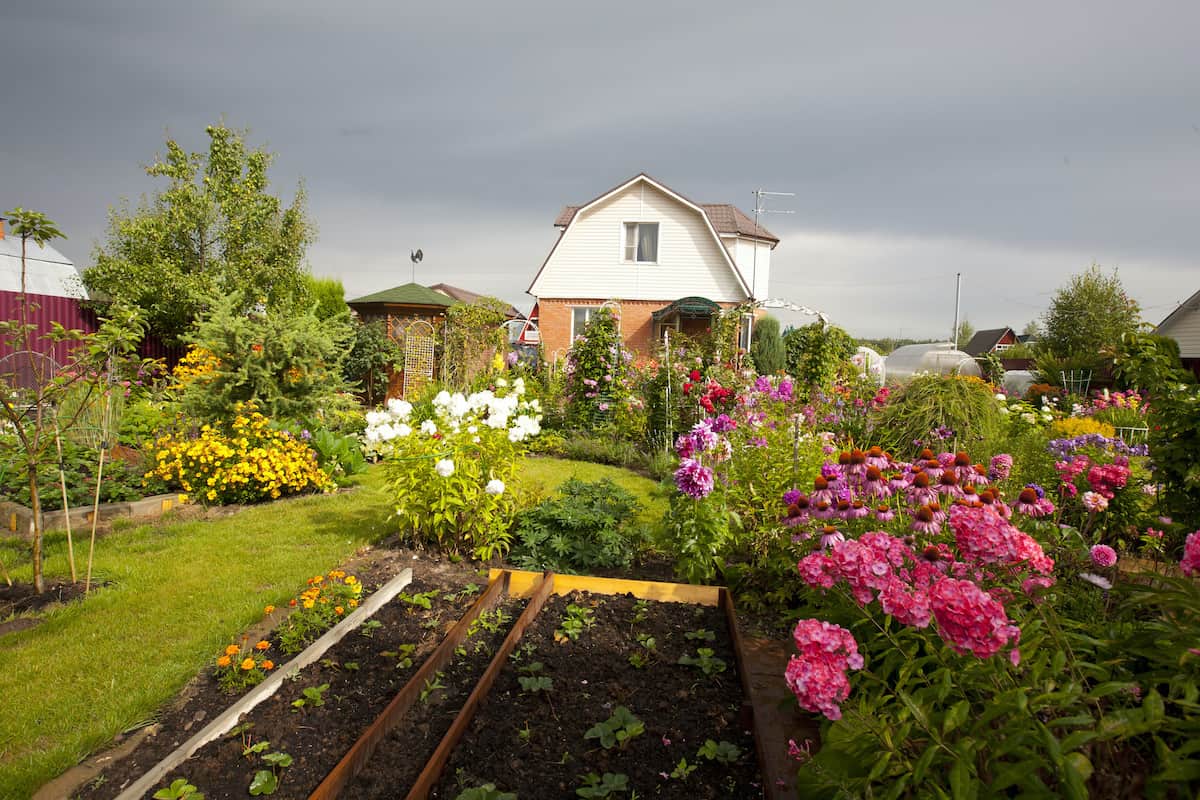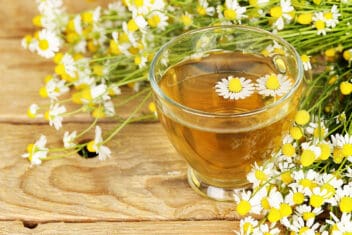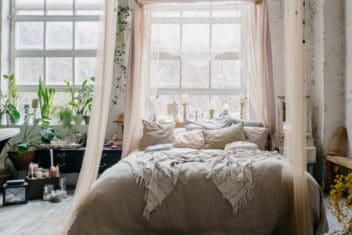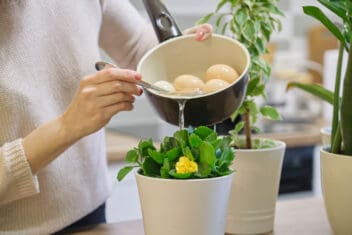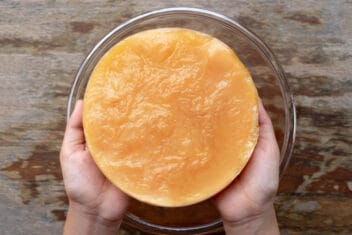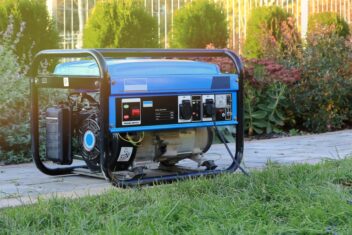I spend a lot of time researching historical pastoral and rural food writings looking for information on traditional recipes, preservation methods, butchery, heirloom vegetables, and more. In recent research, I stumbled across the historical concept of the ferme ornée in French or “ornamental farm” in English.
I’ve been a bit fixated on the idea ever since as I feel it perfectly describes what I am working toward on my homestead! I am also eager to share what I learned about ornamental farming with those of you who want to homestead not only for self-sufficiency but for the absolute joy and beauty of doing it.
If that sounds like your cup of tea (or glass of wine), then come with me to learn the history of ornamental farming, and some easy, practical ways you can apply it to your homestead.
Ferme Ornée a.k.a Ornamental Farming History
Although the term ferme ornée is from the French language, it is attributed to Stephen Switzer, an English garden designer and writer who lived from 1682–1745. He used that phrase to describe a country estate that was laid out partly according to aesthetic principles and partly for farming.
Woburn Farm in Surrey, England was considered one of the earliest practical adaptations of this farm design concept. But several others followed suit in the 18th century, during the Romantic movement. Marie Antoinette’s “Hameau” at Versailles is another famous example that focused more on ornamental aspects rather than being a productive farm.
Mythical Arcadia

These ornamental farms were meant to be modeled on the mythical place Arcadia. Although Arcadia was an actual place in Greece, it was also the imagined home of Pan the part goat god. The mythical version of Arcadia was a pastoral paradise of rich, diverse forests and varied landscapes, where nymphs and such could frolic.
This idea of a pastoral, natural paradise (like Arcadia) coupled with aspects of a working farm capable of providing the basic human necessities for a simple, comfortable life is at the heart of the term ferme ornée.
I bet you are now starting to see how this idea of an ornamental farm might also apply to a homestead. Who doesn’t want to live in an idyllic paradise that provides all the delicious food and comforts you need without robbing from nature and ruin the environment?
The challenge though is trying to marry the idyllic with the practical. At the time when this idea became popular, only wealthy landowners could effectively embrace the dream. The ornamental farms created were often used as vacation or retirement homes for the rich.
For example, here’s what the historical landscape design author Andrew Jackson Downing, says about it in his 1841 work “A Treatise on the Theory and Practice of Landscape Gardening…”:
A picturesque or ornamental farm like this would be an agreeable residence for a gentleman retiring into the country on a small farm, desirous of experimenting for himself with all the new modes of culture.
Great American Ornamental Farmers
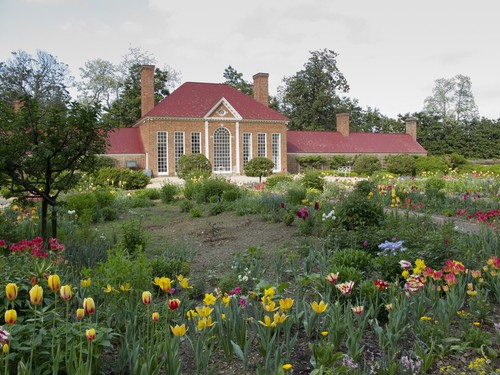
Retiring English Gentlemen weren’t the only people interested in this way of living. American Founding Fathers Thomas Jefferson and George Washington were also both striving to create their own visions of ornamental farms in the U.S.
Both of their farms were working plantations which looked very much like non-ornamental working farms, supported by slave labor. Yet, they also dedicated parts of their properties to experiments in cultivation and used techniques described by the champions of ornamental farms.
If you ever get to tour Mount Vernon or Monticello, you will see many of the concepts associated with ferme ornée at work on those stunningly beautiful ornamental farms. Of course, you’ll also come face to face with the hard facts that those livings were only afforded by slave labor.
Thankfully if you want to create a ferme ornée today, you can do it with just your own labor, some minor costs, and a good plan.
8 Features of an Ornamental Farm
Now, let’s take a look at exactly what kind of ornamental features transform a working farm into a ferme ornée.
1. Serpentine Avenued Walks
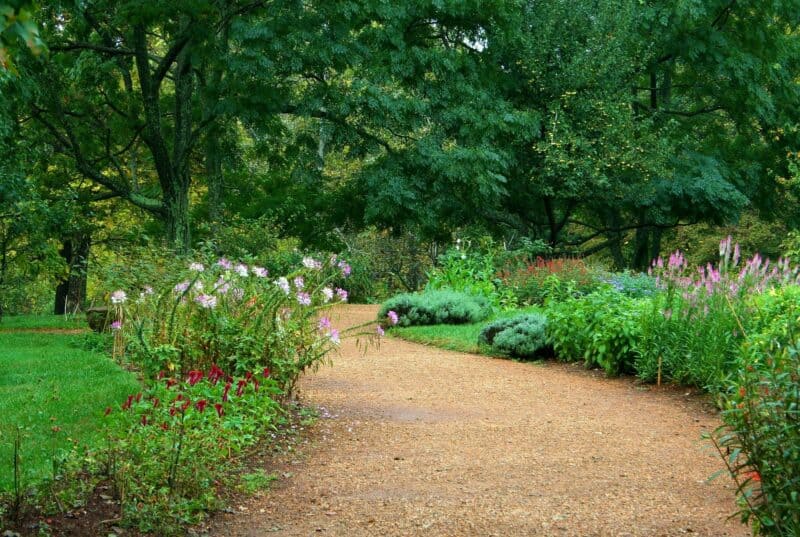
In traditional farming, plots are planted as large square plots. The plots might be separated by narrow strips of trees, or by cleared pathways that equipment can move through. In an ornamental farm though, the plots would be separated by snaking walkways lined with ornamental trees or hedges.
2. Irregular Plant Plots
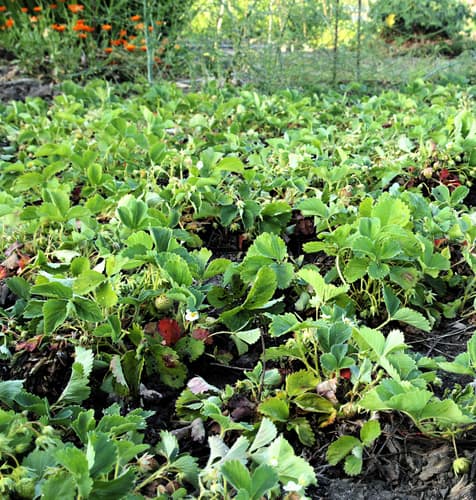
These walks would meander from the house, around the property, while passing through various irregular-sized, mixed-use farm plots. Close to the house, there might be a decorative potager type vegetable garden. Then, a little further on there could be a few small orchard plots with intermixed fruit trees.
Perhaps there would be some large production crops like wheat or corn. But they would be broken into smaller plots of land and artistically planted in odd shapes, bordered by fragrant or flowing hedges. The goal was to use these irregular plots to produce food while also creating patterns that looked more like the way nature grows things.
3. Water Features

No paradise would be complete without some kind of water feature. Lakes, ponds, streams, fountains, creeks, rivers, and small waterfalls might be employed to make a small farm seem more like a natural paradise.
4. Lovely Views
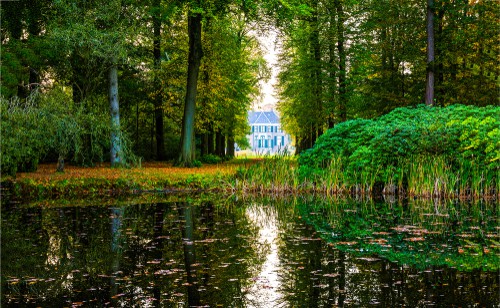
Another key aspect of the planning of an ornamental farm is to create the impression of windows where you can stop and take in the beautiful views.
Perhaps the avenue might lead you to the top of a small hill where you can look down on the orchard. Or maybe you would pass through a small dark forest that opens up to a lush pond stocked with fish and some waterfowl, like ducks, geese, or swans.
5. Beautiful Buildings
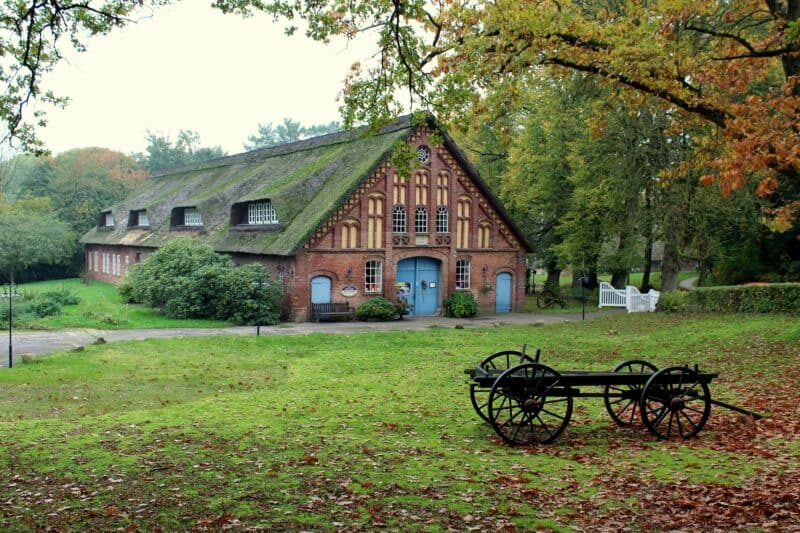
Although a ferme ornée would likely have a grand house, the style of the house would be fairly simple rather than ornate. It might be made with natural materials such as a thatched roof or stone from the area.
Outbuildings too, would be functional, but also rustically beautiful. Stables, barns, storage sheds, and such might be made with more care for their aesthetic appeal than they would on a production farm.
6. Lush Pasture
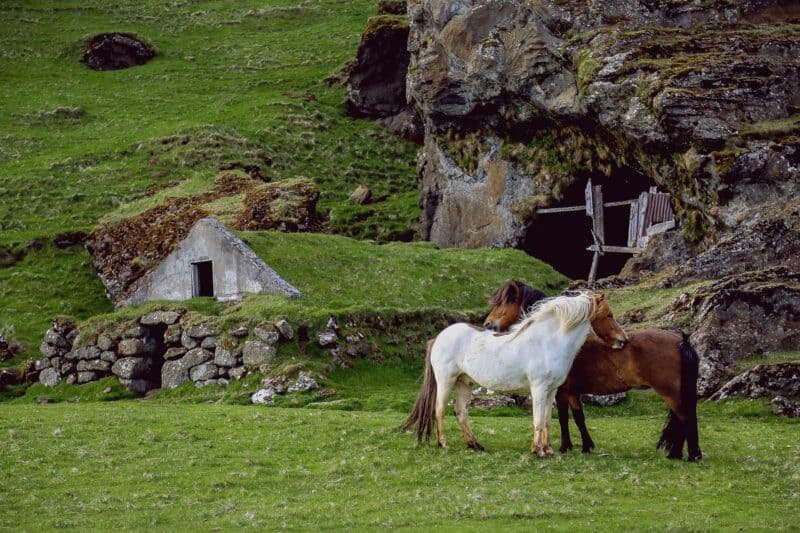
No ornamental farm would be complete without a few animals enjoying lush pasture. Over-grazed ugly areas of closely crowded animals are often the norm on a production farm. But for these decorative farms, the animals would be beautiful breeds with sufficient space to roam.
Although, they’d likely have long narrow pastures rather than large expansive ones so the residents could look out and see them in pasture at any point.
7. Decorative Plantings
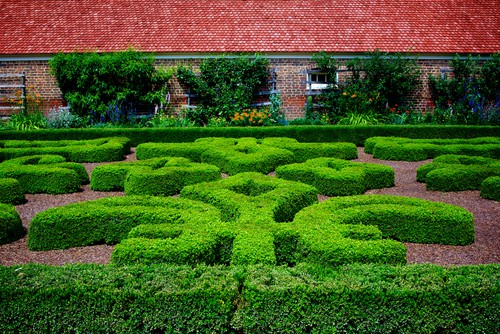
On an ornamental farm, decorative plantings were also key. A few well-placed topiaries might be used to draw the eye. Or mass plantings of the same colored flowers might line a part of the walk. A flower meadow could complement the more structured crop and orchard areas.
8. Invitation to Leisure
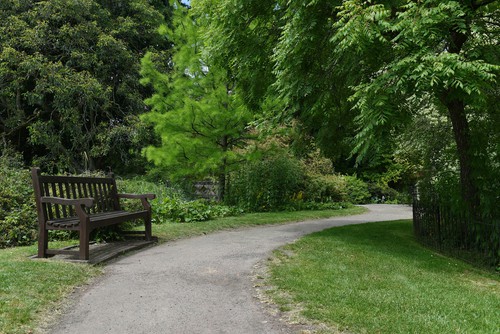
Although these farms would be productive, productivity was secondary to beauty because they were meant to be invitations to relax in the abundant beauty of rural life.
As such, places for picnics, well-placed benches, gazebos, or special spots for quiet contemplation would also be part of the design.
How to Create an Ornamental Farm
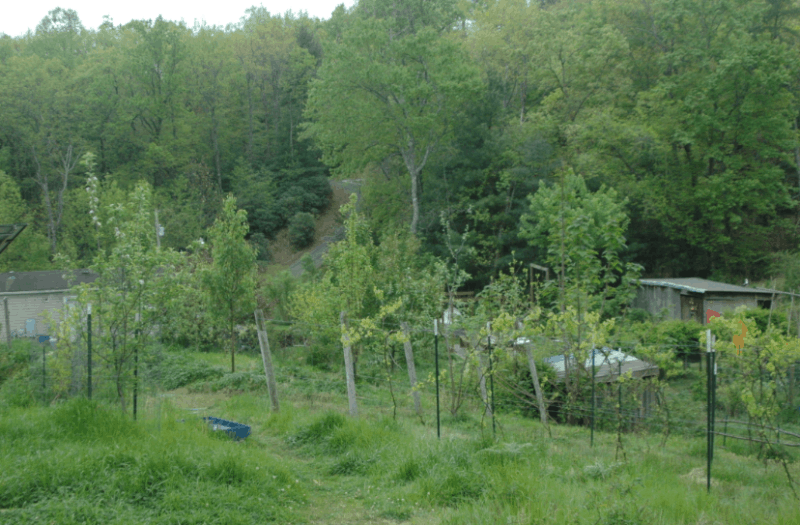
I don’t know about you, but all that sounds like exactly what I had in mind for my homestead! In fact, that sounds a whole lot like what my homestead looks like today with wandering paths, seating areas, and water features.
I didn’t exactly know that I was designing a ferme ornée type homestead when I started. But I was certainly influenced by my regular visits to Mount Vernon and Monticello as well as a few country chateaux I visited on trips to France.
After 6 years of work, I can now promise you that making your homestead both functional and beautiful in the tradition of a ferme ornée is entirely possible even on a minuscule budget.
There are a few practical considerations you’ll need to navigate to make your landscape highly productive and bucolically beautiful at the same time.
Here are a few things to get you thinking about how to satisfy your practical needs and achieve your aesthetic ideals on your own ornamental farm.
1. Harmony with Nature
In some ways, your homestead must be somewhat ornamental to be sustainable. For example, if you overstock your pastures so they are ugly and over-grazed, you’ll have to bring in lots of feed.
That isn’t exactly self-sufficient. So, you’ll need to stock your land only with the number of animals it can support. That means it will remain beautiful through most of the growing season. So, really that Arcadian dream of harmony with nature is already built in the homesteading ethic.
2. Scale is Key
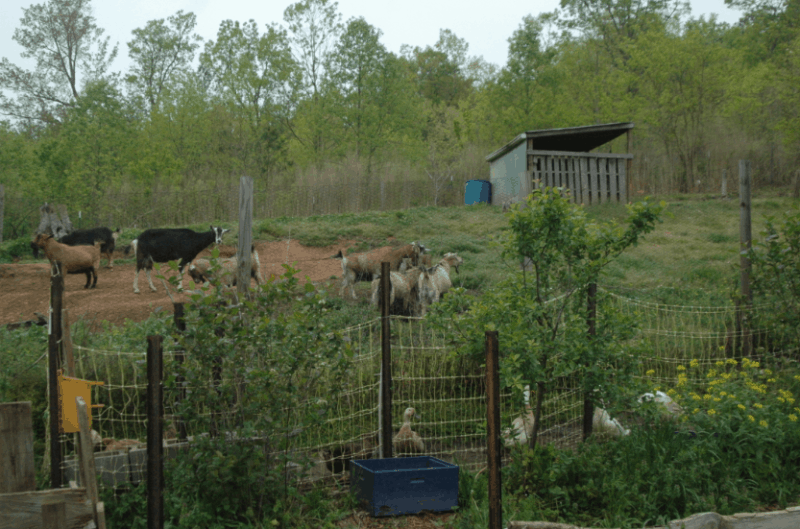
The ferme ornée as conceived by Switzer, Downing, and others like them is meant to be a relatively small farm of maybe ten acres to a few hundred. Our modern homesteads are often even smaller than that.
I have about 10 acres, but I only actively maintain 2 of those acres. Many homesteads range from a quarter acre to 5 acres in size. Even though that’s less land than originally envisioned by the founders of this concept, it’s still plenty of space to make your own ferme ornée with a few adjustments.
– Right-size Livestock
Cows and sheep were probably typical in those early ornamental farms. But today, you can opt for less land-needy livestock such as a few mini-goats, free-range chickens, ducks, or geese to use on smaller-sized pastures.
– Pretty and Practical Protection
Smaller livestock tends to be more predator prone. So, you’ll also need to plan protection as part of your pasture picture.
Moveable tractors with chickens trapped inside don’t quite have the same ornamental impact as chickens on the grass. But a moveable house for nighttime shelter and portable predator-proof fencing might do the trick. Or using small paddocks, patrolled outside by livestock guardians could work too.
3. Itty Bitty Buildings

On limited land, you can also scale down the scope by building small single-function buildings. Instead of a big beam and stone barn for multiple kinds of livestock, you could make a quaint chicken coop, an adorable duck house, a charming goat shelter, snazzy storage shed, and a pretty potting shed.
By keeping the building size small, you may be able to avoid permitting hassles in some areas. You can also work with repurposed of freecycled materials to create bespoke buildings that bring authenticity and personality to your ornamental homestead.
4. Workable Walkways
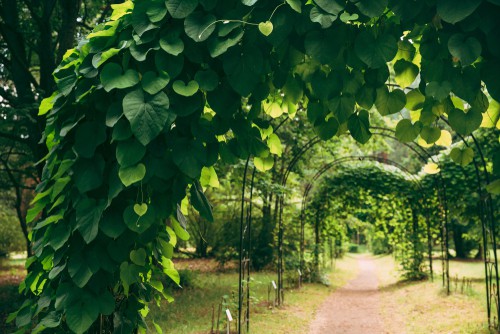
Those “serpentine avenue walks” are a great idea in theory. But you may have to adapt them to work for you. You’ll want to use your paths not only to take leisurely walks around your homestead but also for wheelbarrow or tractor access. You may also need to get to places quickly, so creating short cut paths to cut your number of steps helps too.
– Microclimates
Paths also create microclimates. They become hard and compacted. This makes them hold less water, so they heat and cool faster than planted areas. They also help dry out any adjacent soil too.
As such, you really need to account for those microclimates as you plan your plantings for beauty. Dry loving plants along paths tend to work better than moisture-loving plants.
– Walkways = Waterways
Paths, like roofs, also tend to be great catchers and movers of rain. As such, make sure to incorporate paths into your water management plan.
As an example, sloped paths can send rain sloshing downhill. So, you’ll need to create a catchment at the bottom such as a pond or plant bog. Or you can create swaled switchbacks between planting beds to harvest water where it falls.
How you use your paths will depend on how much rain you have, your slope, your soil-type, and other factors. You can still make them beautiful, but you may have to compromise on your vision to use them practically too.
5. Delicious Decorative Plantings
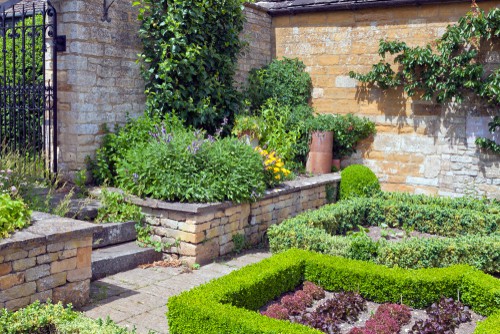
Now, decorative plantings are all well and good. But as homesteaders, growing our own food is not just a side interest, it’s our way of life. If you have room, by all means, plant your favorite ornamentals. But if you are working with limited space, then focus on edibles that double as ornamentals.
The good news is lots of edibles are also stunningly beautiful. For example, you can grow apples, pears, and peaches espaliered so they look like grapevines. Or just grow a small trellised vineyard as an ornamental feature. You can also use all sorts of edibles as hedges around your ornamental homestead.
6. Livable Lovely Views
As for those lovely views, you may not be able to plan them at every corner. But I highly recommend you set up 1 or 2 places in your landscape where you can linger a little while and appreciate all your hard work.
You can work with a natural slope to create a lookout. You can get creative and put up a small roof deck on top of one of your outbuildings. Or you can put a platform in a large, sturdy tree. There are lots of ways to get a grand view in a small space, you just have to be a little creative in how you do it.
Ornamental Homesteading – Paradise on Earth

I hope this little history lesson and close look at some practical applications have inspired you to create your own functional, beautiful ornamental homestead – your own paradise on earth.
Also, if you want to be inspired by a modern example, albeit a super expensive one, check out Patina Farm. I actually want to live in their chicken coop!
Happy homesteading!
